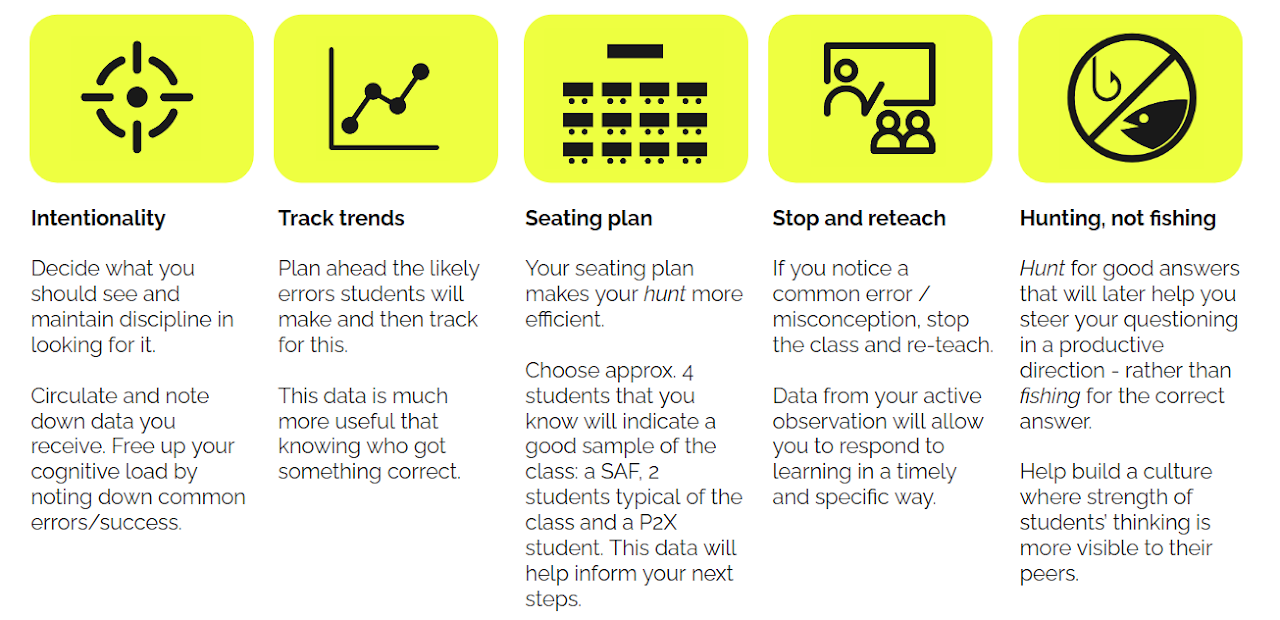Active Observation
Check for understanding with active observation
What
- It is a method of ‘checking for understanding’ through improving the way we observe our students’ work
- The key idea here is that a teacher walking around the classroom should be seen as a method of collecting objective data. This requires having clarity about what you’re looking for.
- It is important to be clear about what you’re hunting for, then making notes about which student responses, or types of responses, you want to comment upon or refer to when you bring it back to whole-class teaching.
Why
Reduces cognitive load
- We have a huge cognitive load when we are teaching
- It is impossible to take accurate, ‘mental notes’ whilst going around the classroom - we just won’t remember it all
- By noting down common trends in our ‘data’, we reduce our cognitive load in the moment
Accurate checking for understanding
- We are able to accurately respond to the emerging needs of our students in a timely and specific manner
High Frequency Errors
- Assuming students are learning because they look ‘busy’
- Not have a focus on what to look for as you circulate
- Not planning ahead for common misconceptions / errors
- Missing obvious ‘trends’ in student understanding and not stopping to reteach/remodel
- Not targeting questioning
Active Observation
What A Good One Looks Like: Intellectual preparation for Activeobs

English
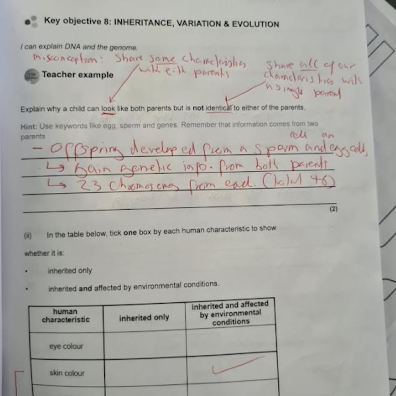
Science
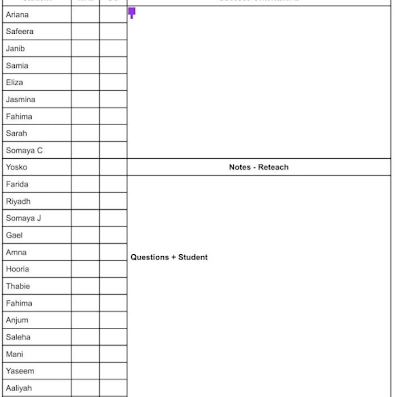
Sociology
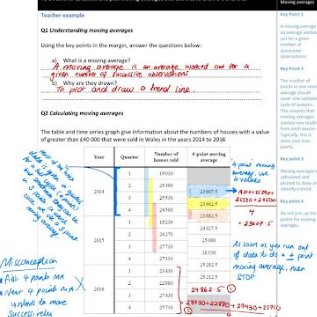
Maths
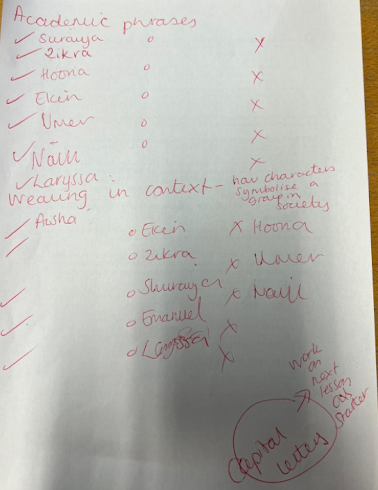
Key takeaways
- Intellectually prepare to plan in how you will hunt for data that checks for understanding
- Actively monitor with intention, jot down trends you notice and act.
Take the quiz to complete module 18!
Phase 4 - Sheds Loads of Practice
Key reading
-
ActiveObs, Teach Like A Champion 3.0 by Doug Lemov
